Asana vs. monday.com: Project Management Software Showdown in 2025
It doesn’t matter which way you slice it; in the world of project management, monday.com and Asana are the two most popular workflow management tools. The biggest question, though, is which one is better? Join us as we attempt to put the Asana vs monday.com debate to bed with our detailed comparison of both services.
If you’re a project manager, chances are you’ve heard the names monday.com and Asana. These two powerhouses have been splitting opinions for years, and many users have difficulty deciding between the two project management systems.
Thankfully, our project management professionals ran a series of rigorous tests and put together this easy-to-follow Asana vs monday guide to help you choose.
monday.com hit the scene in 2014 and became a key project management player thanks to solid marketing and a Webby award. With its friendly interface, team collaboration tools, time tracking and advanced reports, monday.com, is understandably a favorite of many and tops a number of our lists (read our best project management software list). You can learn more in our monday.com review.
Asana launched commercially in 2012 and is one of the best task management tools and the best monday.com alternative around. With a beautiful user interface, powerful task management and collaboration features, a generous free plan, and slick desktop and mobile apps, Asana is also a shoo-in as one of the best project management software options. You can learn more about it in our Asana review.
Avoid Costly Project Management Mistakes – Get Free Tips Today!

- Discover 10 fundamentals of project management
- Understand step-by-step plans for PM execution
- Learn tips to avoid 5 common mistakes by beginners
This guide will explain how the two tools compare and contrast, and we will make our best suggestion on which service to use depending on your needs as you manage projects.
-
03/05/2023 Facts checked
Our monday.com vs Asana software showdown has been rewritten with new information and formatting.
-
03/05/2024
Our monday.com vs Asana software showdown has been updated with new information about Asana’s plans.
| Features | ||
|---|---|---|
| $9 / month(All Plans) | $10.99 / month(All Plans) | |
| Review | Review | |
| Kanban board | ||
| List | ||
| Calendar | ||
| Timeline | ||
| Spreadsheet view | ||
| Gantt charts | ||
| Workload planning | ||
| Long-term planning | ||
| Multiple project management | ||
| Dependency management | ||
| Native scrum management | ||
| Set user permissions | ||
| File storage | ||
| Time-tracking | ||
| Built-in integrations | ||
| Reporting features | ||
| Free plan | ||
| Free Trial | 14 days | 30 days |
| Web app | ||
| Windows | ||
| MacOS | ||
| Android | ||
| iOS | ||
| AI Tools | ||
| Ticket-based support | ||
| Tutorials | ||
| Knowledgebase | ||
| Forum | ||
| Live chat | ||
| Phone support |
How Did We Rate Asana vs. monday.com?
Our experts looked at and compared both platforms’ key features, like the user interfaces, team management tools, security, pricing and more, in order to rate Asana vs monday.com. The goal is to help you determine which project management tool is right for you and your business.
monday vs Asana: Similarities & Differences
Asana and monday.com were both designed to do the same thing: help make the life of a project manager easier. These programs offer task tracking, team and work management tools, a secure place for all your data and team collaboration tools. Below, we’ll look at the similarities and differences between each piece of project management software that we found during our testing. Let’s have a look at monday vs Asana:
| Features | monday.com | Asana |
|---|---|---|
| Workflow Views | ||
| Kanban board | ||
| Gantt Chart | ||
| Lists | ||
| Dashboard | ||
| Workload | ||
| Spreadsheets | ||
| Calendar | ||
| Project Management Features | ||
| Communication tools | ||
| File sharing | ||
| Multiple project management | ||
| Native scrum management | ||
| Integrations & automations | 40+ | 200+ |
| Reports | ||
| User Permissions | ||
| Support | ||
| Learning centers | ||
| Forums | ||
| Live chat | ||
| Phone support | ||
| Extra Features | ||
| Free plan | ||
| Free trial | 14 days | 30 days |
| Windows & macOS apps | ||
| Mobile apps |
Similarities
Now that you know what we’ll be looking at in this comparison piece, we’ll get into the meat and potatoes of it. First, we’ll look at the similarities of both platforms so that you can start to get a better idea of each option.
Knowledgebase and Tutorials
monday.com offers a suite of training tools to help you learn the software. Whether you need help creating a board, learning how to use integrations or using task management features, monday’s knowledgebase, community forum and monday.com Academy will help guide you. The good news is that all of these tools are available in every plan.
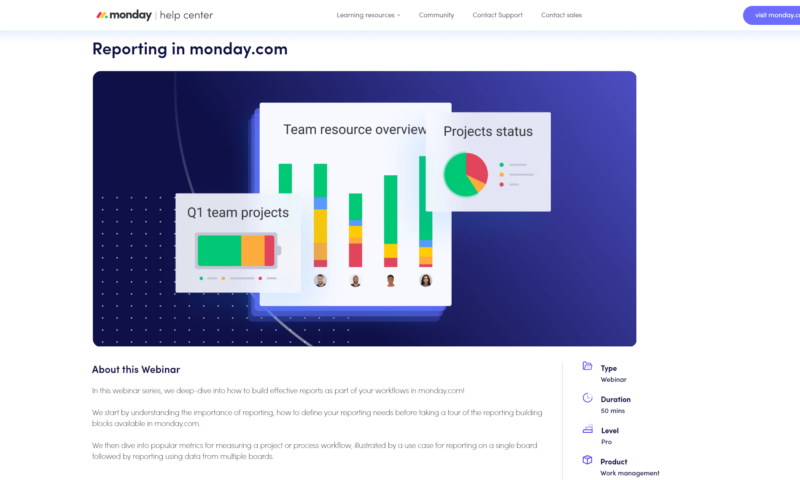
that will bring you up to speed quickly.
Like monday.com, Asana provides an assortment of training materials that will help you on your merry way, in the form of help forums, webinars and the Asana Academy. In our testing, we found the learning materials accessible, easy to follow and provide knowledge on everything from simple to complex problems.
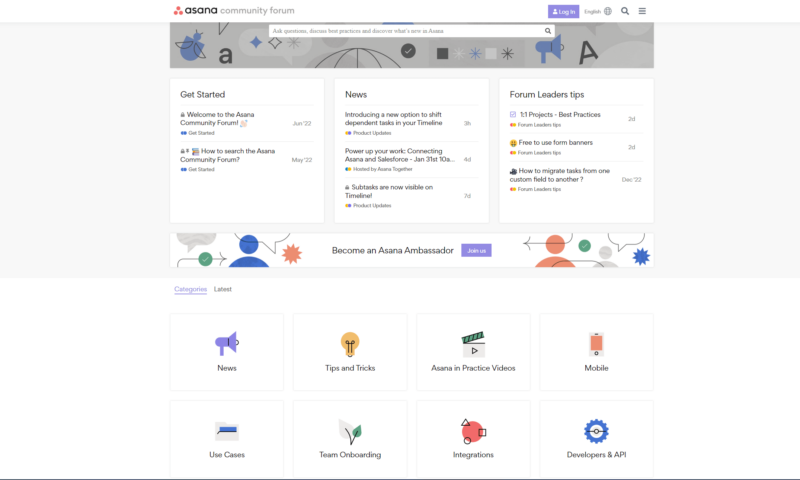
Both platforms do a stellar job of teaching users new tricks. Fortunately, we don’t think many end users will need to spend too much time with the teaching tools. Only when you need advice on an advanced topic will you need to don your learning hat.
Core Features
We’ve reviewed dozens of project management tools and can safely say that monday.com is as versatile as project management suites come. Whether you run a small business, medium business or enterprise, monday.com has your back with robust task management features, portfolio management (groups) and collaboration tools, integrations and automations, and a pleasant interface.
All the features combine nicely and will help you manage tasks efficiently.
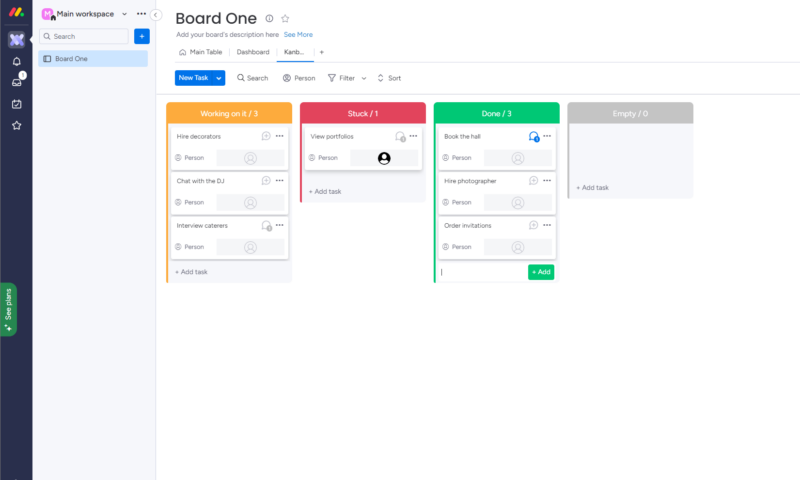
it still offers a nice place to plan and track task progress.
Asana gives monday.com a run for its money with its core features. You’ll find a user-friendly interface, robust collaboration tools, many different views (including kanban boards, charts and lists that help you visualize progress), portfolio management and access to a dizzying number of integrations.
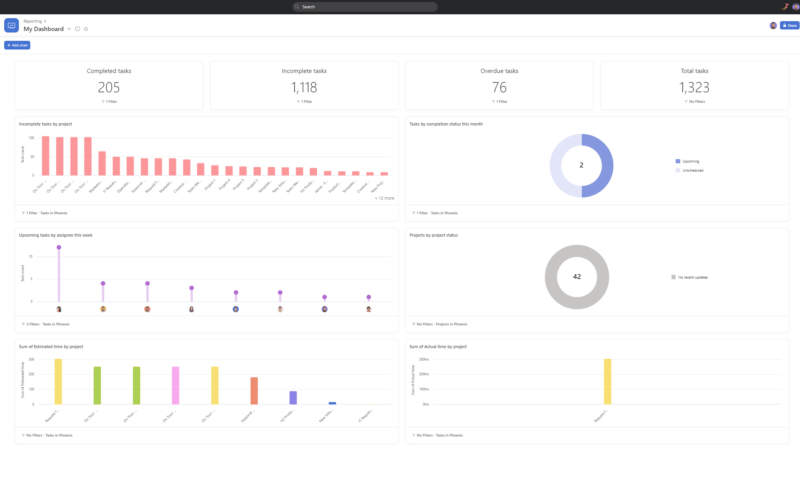
Thanks to their features, monday.com and Asana are well-suited for most tasks. Still, we wouldn’t recommend either platform for software development or for those who manage agile teams. For that, our project management gurus recommend Jira. You can learn more in our Jira review, monday.com vs Jira and Asana vs Jira articles. For everything else, it’s hard to go wrong with monday.com or Asana.
Workflow Management Tools
Project management software is nothing without solid task management tools. Fortunately, both platforms provide project managers with many workflow views and tools (with the right plans). Let’s see how Asana and monday.com compare.
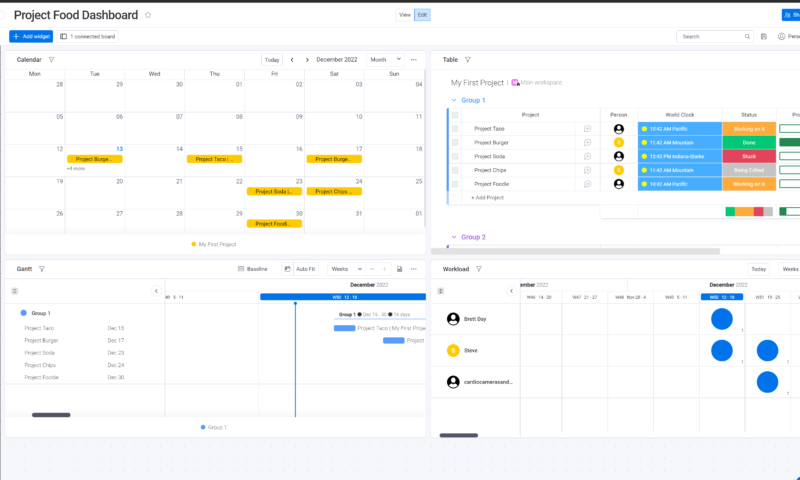
monday.com’s main view is a list view; however, it’s accompanied by stellar Gantt charts and calendar, chart and workload views, to name a few. The dashboard is also top-notch and provides a helpful global overlook of your project(s). Our test results show that all views work seamlessly with each other, and they’re easy to manipulate. They all look great, too.
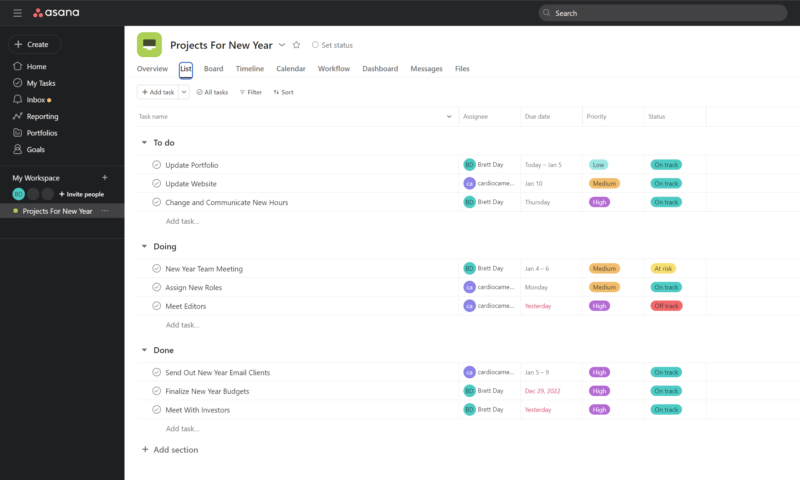
Asana and monday.com offer enough tools for managing workflow. All the views in both suites are intuitive and easy to use. You can quickly create tasks and assign them to team members, add task details, like due dates, and manage your team’s workflow. The differences between the two platforms concerning these tools are minimal at best and should be considered equal.
Security
From a security standpoint, monday.com and Asana both offer good features. Of course, the advanced security features vary from plan to plan, so make sure you pick the plan with the options you need. Both platforms are hosted on Amazon Web Services, and, while we have slight concerns about that, the past AWS leaks are not the fault of monday.com or Asana.
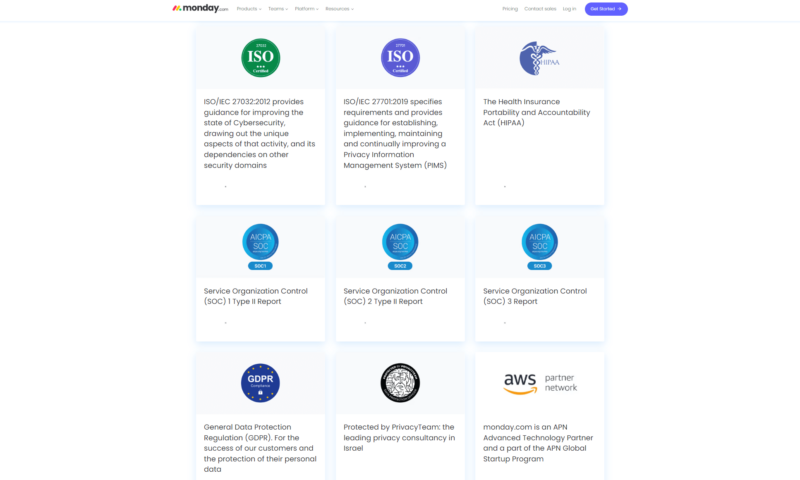
Users of monday.com have little to worry about regarding security. The platform boasts two-factor authentication, SOC Type 2 compliance, single sign-on options with Okta, One Login and Azure, and SAML options. You’ll also find private workspaces and HIPAA and GDPR compliance. monday.com also uses TLS when transferring your data to AWS servers.
Security is just as good on the Asana side of things, too. Like monday.com, Asana offers two-factor authentication and SOC Type 2 compliance. You’ll find Google SSO and SAML 2.0, as well as HIPAA and GDPR compliance. Asana also provides private projects and uses TLS while transferring data to the AWS servers.
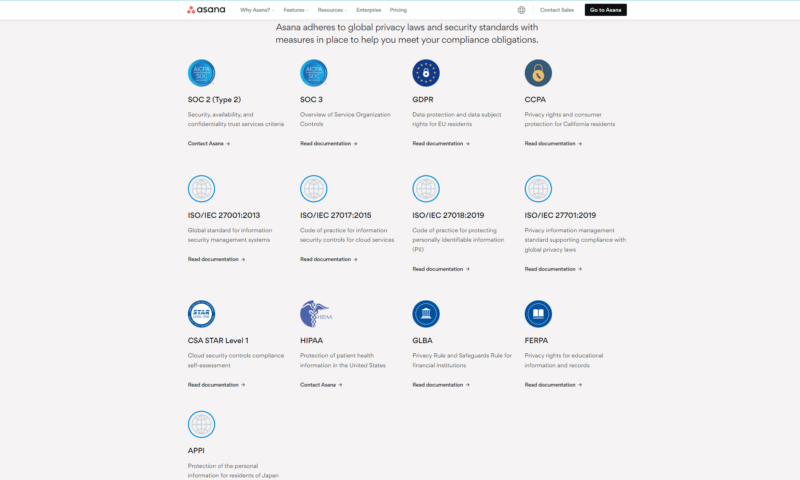
From our firsthand experience with both tools, we can see that Asana and monday.com take security pretty seriously. If you need the best security tools, you’ll need to jump into each platform’s Enterprise tier. Still, for everyone else, we believe that the standard security features offer more than enough protection. Of course, only you can decide what’s right for your business.
Desktop and Mobile Applications
If you’re on the road often and need access to your projects, both Asana and monday.com offer mobile apps that make managing tasks easy while traveling.
The apps across all platforms are so good, they made our best project management software for Windows and best project management software for Mac and iOS roundups.
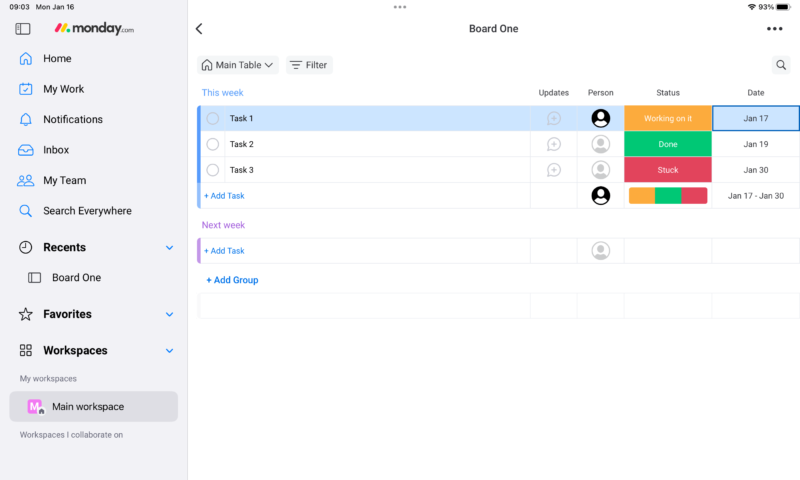
of your plan, including integrations and automations.
The native desktop app monday.com created has set the standard for others. The app — available for Windows and Mac — is beautiful, full-featured and operates the same as the web-based version. The mobile app is lighter on features, but is still handy for basic project management on the go.
After using the tool, we found that Asana’s native desktop app for Windows and macOS is a joy to use, too, thanks to its slick UI, a full suite of kanban, chart and other views, and its stability. The mobile iOS and Android apps — like monday’s offerings — are quite bare-bones, but you can still perform basic task management functions, and the app is a joy to use on a large tablet thanks to full touch support.
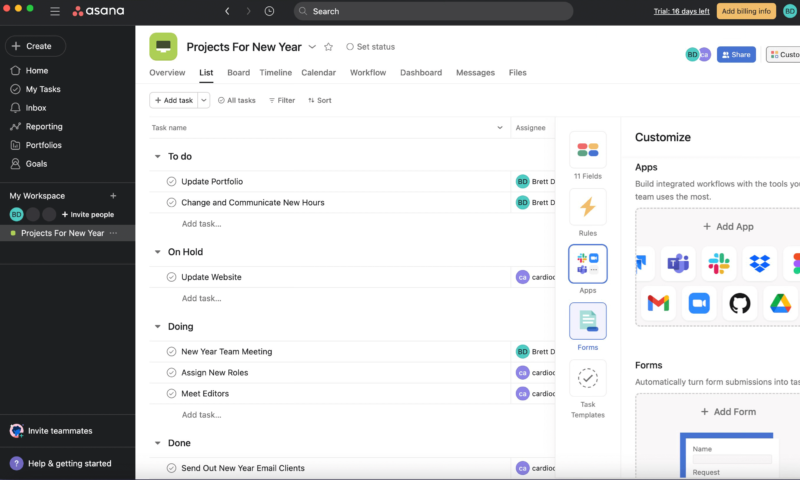
the office will appreciate Asana’s desktop and mobile apps.
If you like the idea of accessing monday.com or Asana outside of the typical web setting, you’ll thoroughly enjoy the native desktop and limited but useful mobile applications. Both services offer their apps with every plan, and they’re so easy to use that a team member or a project manager will have no issues making project updates on the fly.
Differences
Here, we’ll look at the key differences between these two project management tools. To be honest, there aren’t too many, but we feel that the differences listed below are worth discussing.
Integrations
While monday.com and Asana offer integrations, the number of integrations on each platform is wildly different. You’ll find that both platforms support most major third-party apps, like Microsoft Office, Slack, Google Drive and Dropbox. However, some premium integrations, like Adobe’s Creative Cloud and Salesforce, can be locked behind paywalls.
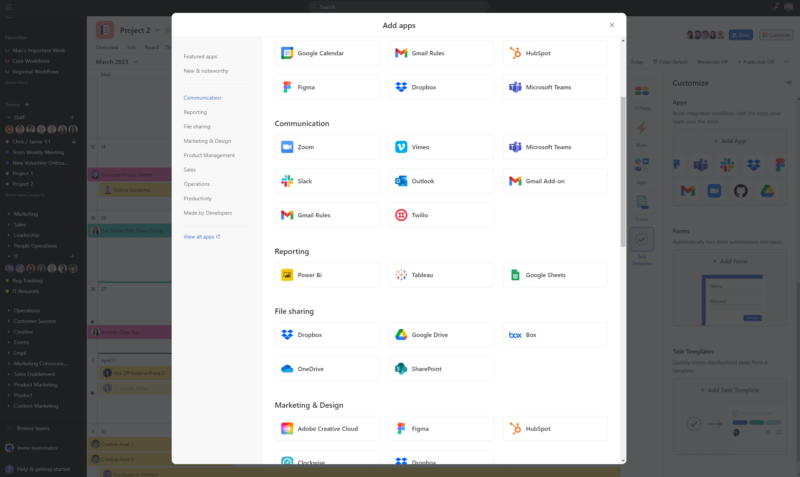
collaboration and business management applications.
If your business uses a wide array of software, consider taking a closer look at Asana integrations. This project management software integrates with over 200 applications. If you wish to add communications and sales apps, scheduling and time tracking suites, or more, you’re covered with Asana, even if you use slightly more obscure third-party solutions.
monday.com, on the other hand, only offers integrations from roughly 40 platforms. You’ll find the major players (such as Google and Slack) supported, but the number of supported integrations is significantly lower than those found in Asana. If you don’t rely too heavily on integrations, you’ll be okay with monday.com. It all just depends on your business needs.
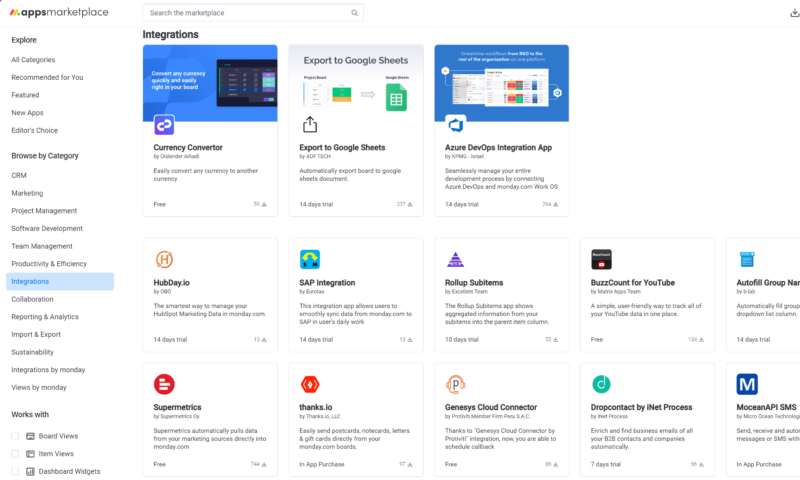
Integrations play a significant role in many project management software suites, and Asana and monday.com are no different. While monday.com offers integrations for the most popular software, Asana takes integrations to the next level. We recommend that you look at the lists of integrations available on monday.com’s website and Asana’s site.
User-Friendliness
There’s no doubt that monday.com is the most user-friendly project management software we’ve tested. The UI is beautiful and intuitive. All the tools work as you think they would, and creating, assigning, completing and discussing tasks is a breeze thanks to powerful messaging and file-sharing tools. monday.com is ideal for businesses with team members of all skill levels.
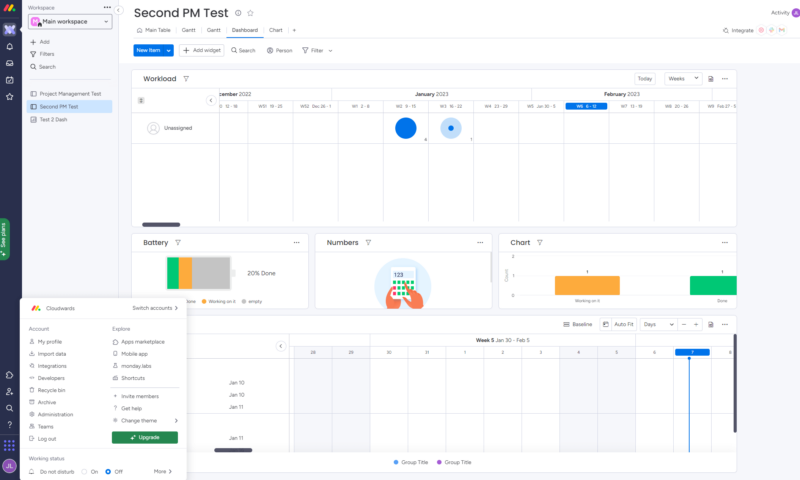
Asana has a pleasing interface and a robust set of collaboration tools. Performing basic tasks is straightforward. However, Asana becomes quite convoluted when digging deeper into complex tasks, which could cause you to dip into the knowledgebase more often than you’d like. If you have a tech-savvy team, you’ll be OK. Still, Asana is more challenging to use than monday.com.
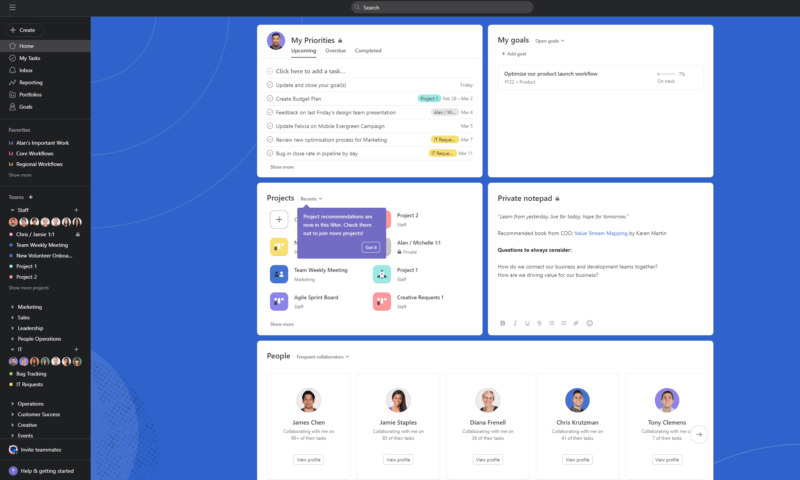
but it is still nice to look at and use.
monday.com and Asana are the software equivalents of the iPhone and an Android device, respectively. Asana is relatively easy to use and offers lots of granular control, but it quickly becomes complex, whereas monday.com is virtually foolproof. Everything works exactly as it should, making it much easier for team members to just pick up and use.
Pricing and Plan Progression
monday.com offers four main tiers and an Enterprise plan. You’ll find a free Individual plan, a $12 per user per month Basic plan, a $14 per user per month Standard plan and a $24 per user per month Pro plan.
- Maximum users: 2
- Minimum users: 3; All prices per user
- Minimum users: 3; All prices per user
More plans
- Minimum users: 3; All prices per user
- Enterprise-level features.
Note that you’ll save per user if you subscribe to the annual plan rather than the monthly option. There’s also a three-person minimum for monday.com plans.
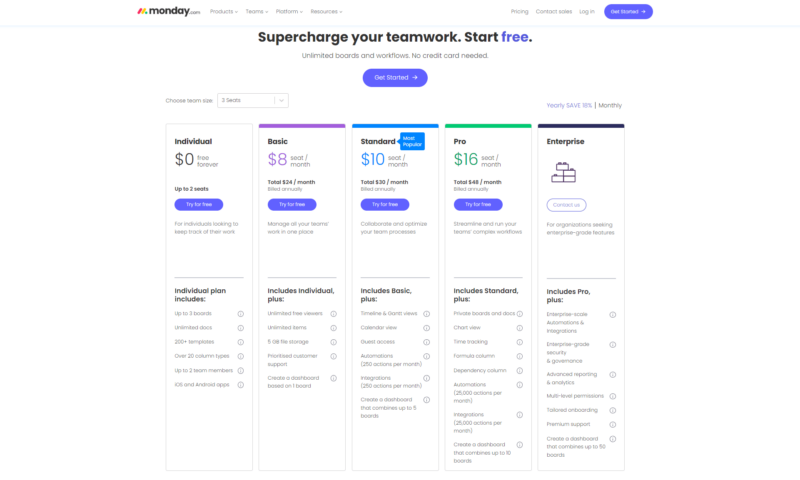
with monday.com by subscribing to a pay-yearly plan.
In contrast, Asana offers four tiers: a free Personal plan, a $13.49 per user per month Starter plan, a $30.49 per user per month Advanced plan and two scalable Enterprise plans.
- Up to 10 users
- Price is per user. unlimited users, expanded features
- Price is per user. unlimited users, even more features
- Custom pricing, advanced security features
Asana also offers discounts for subscribing to the annual plan, dropping the Starter plan to $10.99 per user per month and the Advanced plan to $24.99 per user per month.
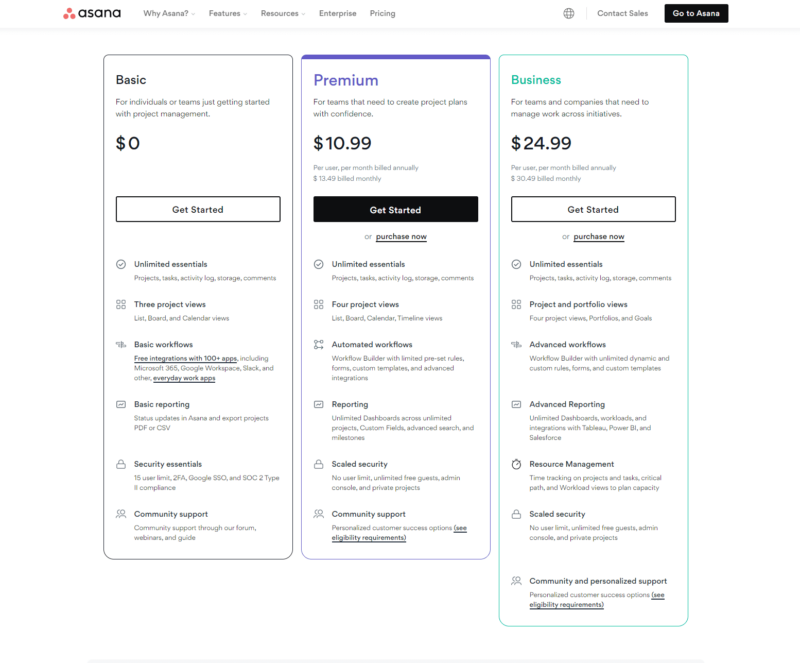
The two platforms couldn’t be more different regarding their free versions. monday.com’s Individual plan is not worth it, whereas Asana’s free plan is one of the best around.
The $8 Basic plan monday.com offers is also a hot mess. We feel that monday.com could do much better here. As it stands, you should avoid monday’s entry-level plans.
Things get interesting when you start comparing monday’s Standard and Pro plans against Asana’s Starter and Advanced plans. Thanks to similar feature sets that include unlimited users, tasks and boards, lots of views, advanced reports, security features and admin controls, monday.com quickly becomes the better option due to it being a fair bit cheaper than Asana.
Aside from the poor entry-level options, monday.com offers more value. Still, if you have a small team and need only some of the features, Asana’s free plan could be for you. We recommend looking at our monday.com pricing guide and Asana pricing guide to find out more. monday.com offers a 14-day free trial, while Asana offers a free 30-day trial.
Which Is Better: monday.com vs Asana?
For most users, the polished interface and task management makes monday.com the better choice overall. However, both platforms offer a wide array of powerful tools that track tasks, help with workflow management, and make collaboration efforts easier. Everyone has different needs, and ultimately you’ll have to pick software based on those needs. Here is what our experts think.
We Recommend monday.com If You Want…
- A great user experience: monday.com offers a no-fuss approach to project management that’s quick to learn.
- Features galore: monday.com provides access to a large number of easy-to-use tools, reports and collaboration features.
- To save money: You’ll find some of the most affordable and well-priced plans for small to medium-sized businesses with monday.com.
We Recommend Asana If You Want…
- To manage better: Asana is built to manage larger teams and provides more control over complex projects.
- Better communication: Asana offers superior portfolio management and easier-to-use collaboration tools.
- To skip a subscription fee: The feature-packed free plan that Asana provides is ideal for individuals and small businesses.
The Verdict: Why We Think monday.com Wins Overall
Judging from our hands-on experience with both services, we can say that while Asana is a feature-packed, user-friendly project management tool, overall, we feel that monday.com is the better project management software. monday.com’s user interface is slightly more polished, easier to use, offers better overall task management features and is a better value proposition.
To make it clear, we’re not saying Asana should be avoided. There’s a reason why it keeps making our roundups of a top project management software. Asana is a fine SaaS that many small to medium businesses and large enterprises use effectively. Still, we’d recommend monday.com over Asana to most who are looking for a new project management tool.
- 1$10 / month(All Plans)
- 2
- 3
- 4
- 5
If you agree with us and have decided to take monday.com for a spin, check out our how to use monday.com guide, so you can get started. However, if you still feel you need to know more about how monday.com compares to other top-notch project management software before you make a final decision, get more info on our Zoho projects vs monday.com or Trello vs monday.com pages. We also have a Trello vs Wrike comparison, if you’d like to read more.
How do you feel about monday.com and Asana? Which platform do you prefer? Is there another project management suite that you like to use instead? Let us know in the comment section below. Thank you for reading.
FAQ
Both Asana and monday.com are identical in many ways. Both are powerful project management tools, but small nuances may make one more appealing than the other to individuals and corporations. It all comes down to how you want to tackle your tasks.
Both pieces of software are potent, but monday.com will be better for most teams due to how much easier the platform is to learn and use, and because of the overall better value proposition compared to Asana. As Asana doesn’t do anything monday.com can’t, so it’s hard to justify the extra expense.
Asana and monday.com each have multiple plans. Both platforms offer free options. monday has plans that cost $12, $14 and $24 per user per month and an Enterprise option. Asana has plans that cost $13.49 and $30.49 per user per month and two Enterprise tiers. It’s worth noting that all monday.com plans require a minimum of three users.



